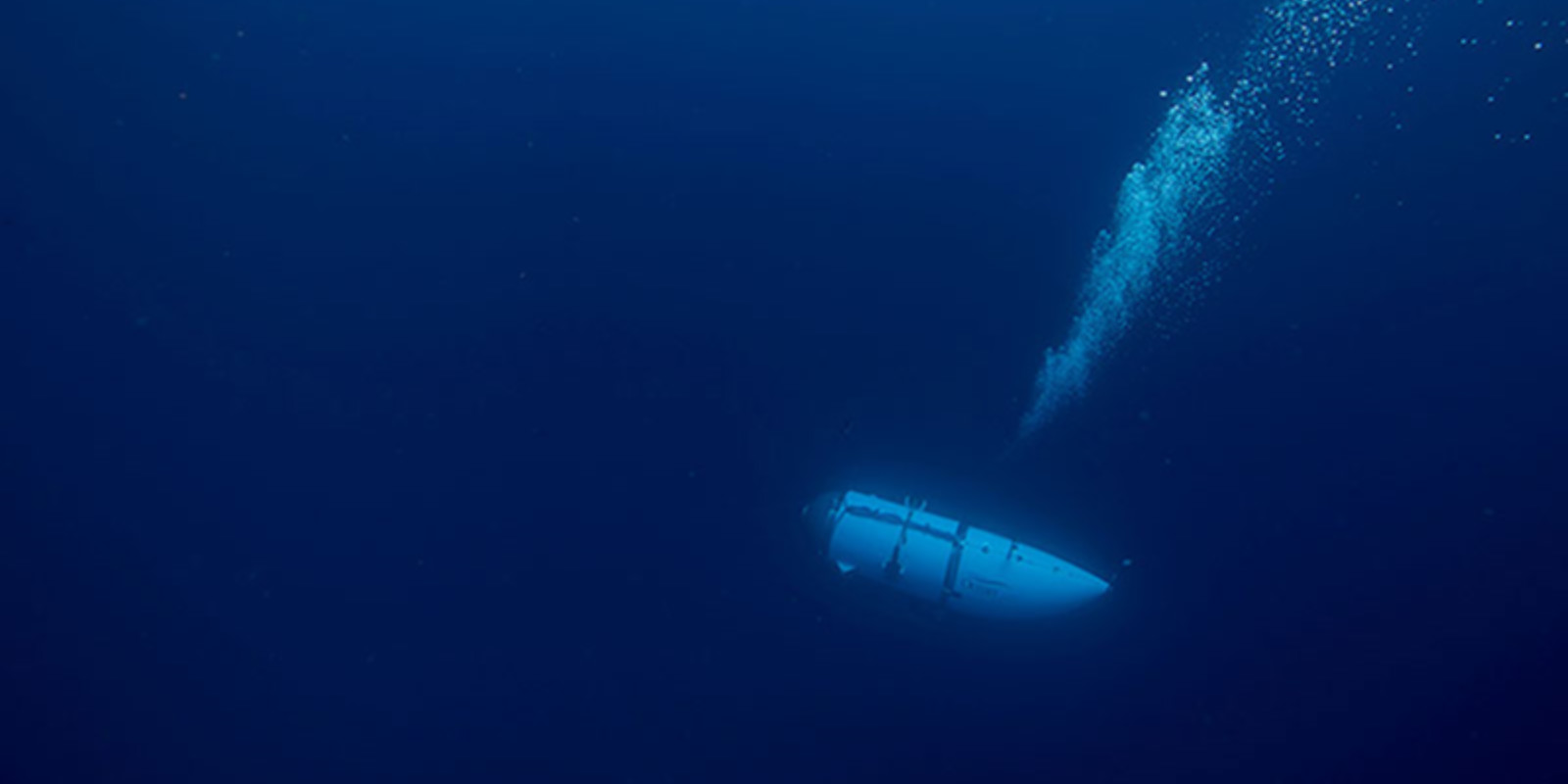Aviva Fried with AFP / Photo credit: OCEANGATE EXPEDITIONS
modified to
7:36 p.m., June 21, 2023
There is only one day of oxygen left: the race against time to find alive the five occupants of the submersible who left to explore the wreck of the Titanic is accelerating on Wednesday in the North Atlantic, where captured noises are causing hope for the armada of rescuers dispatched to the scene. Breathable air supplies are expected to run out on Thursday aboard the Titan, a small deep-sea explorer owned by the private company OceanGate. During the night of Tuesday to Wednesday, the American authorities confirmed a first important advance in research since the alarm was triggered on Sunday evening.
“We do not know” the origin of the detected noises
“We do not know” the origin of the sounds picked up in the ocean during the underwater search to find the five occupants of the submersible which left to explore the wreck of the Titanic and disappeared in the North Atlantic, the rangers said on Wednesday. American coasts. “I can’t tell you what those noises are. What I can tell you, and that’s the most important thing, is that we’re looking for where the sounds” were picked up, captain Jamie Frederick said during from a press briefing in Boston. He added that it was necessary “to remain optimistic and to keep hope”, while the reserves of breathable air were expected to run out on Thursday on board the submersible.
Noises heard “every 30 minutes”
“Canadian P-3 aircraft detected underwater noises in the search area. As a result, ROV (Remote Operated Vehicle) operations were moved to attempt to explore the origin of the noises,” wrote on Twitter the US Coast Guard in Boston, which coordinates search operations. According to the American press, they were heard “every 30 minutes”. “We don’t know the source of this noise,” U.S. Coast Guard Rear Admiral John Mauger told CBS Wednesday morning.
Two robots and a vessel with sonar have been deployed to the area where these noises were detected “to see if we can locate the source of these noises and locate the people in the submersible”, added the chief of the guards. coasts for the northeast. A French Ifremer research vessel with its robot capable of diving to the wreck of the Titanic, which lies at nearly 4,000 meters deep, must also be deployed.
Early Wednesday, the US Coast Guard announced the arrival of three new vessels on site. “We are on an extremely complex site” with the wreck of the Titanic, recalled Rear Admiral Mauger. “There’s a lot of metal and different objects in the water there,” so navy experts were called in “to understand the science behind that noise,” he added. “In the meantime, it’s a target,” he confirms. “As long as there is a possibility of survival, we will continue the work,” he added.
A sign of life from the occupants of the submersible?
A potential sign of life from the five occupants of the submersible but for Bernard Thibault, expert in underwater research, we must remain cautious. “I would be more on the pessimistic side trying to keep hope alive and thinking it’s actually healthy. But still you have to imagine that these people are in a carbon fiber tube and there’s no “There must be tools nearby. So what would they hit with? You would have to hit the hull quite hard, which isn’t a scrap hull, the carbon fiber is going to be something really very unimportant. You have to be very, very, very careful given that we are near a wreck which itself makes a lot of noise,” he said at the microphone of Europe 1.
Five passengers aboard the missing submarine
An American, a Frenchman, a Briton and two Pakistani-Britons dived into the abyss on Sunday aboard the Titan, a submersible designed for five people and about 6.5 meters long. Contact with the craft was lost less than two hours after its departure. Tuesday noon, the US Coast Guard had warned that there were “about 40 hours of breathable air” on board. Since Sunday and the start of research, details implicating OceanGate have emerged, the company being singled out for potential negligence in the safety of its underwater tourism device.
A safety complaint filed in 2018
A 2018 complaint seen by AFP indicates that a former executive of OceanGate Expeditions, David Lochridge, was fired after raising serious doubts about the safety of the submersible. According to this former director of marine operations, a porthole at the front of the device was designed to withstand the pressure suffered at 1,300 m depth, and not at 4,000 m.
The boss of OceanGate, the American Stockton Rush, is aboard his Titan. He dived alongside wealthy British businessman Hamish Harding (58), French Titanic specialist Paul-Henri Nargeolet (77) and Pakistani tycoon Shahzada Dawood (48) and his son Suleman (19), who both also have British nationality. For 250,000 dollars, they embarked on an exploration in search of the remains of what was one of the greatest maritime disasters of the 20th century.
The Titanic was wrecked on its maiden voyage in 1912 after colliding with an iceberg, killing nearly 1,500 passengers and crew. Since the discovery of the wreck in 1985, treasure seekers and tourists have visited it, thus maintaining the myth.
